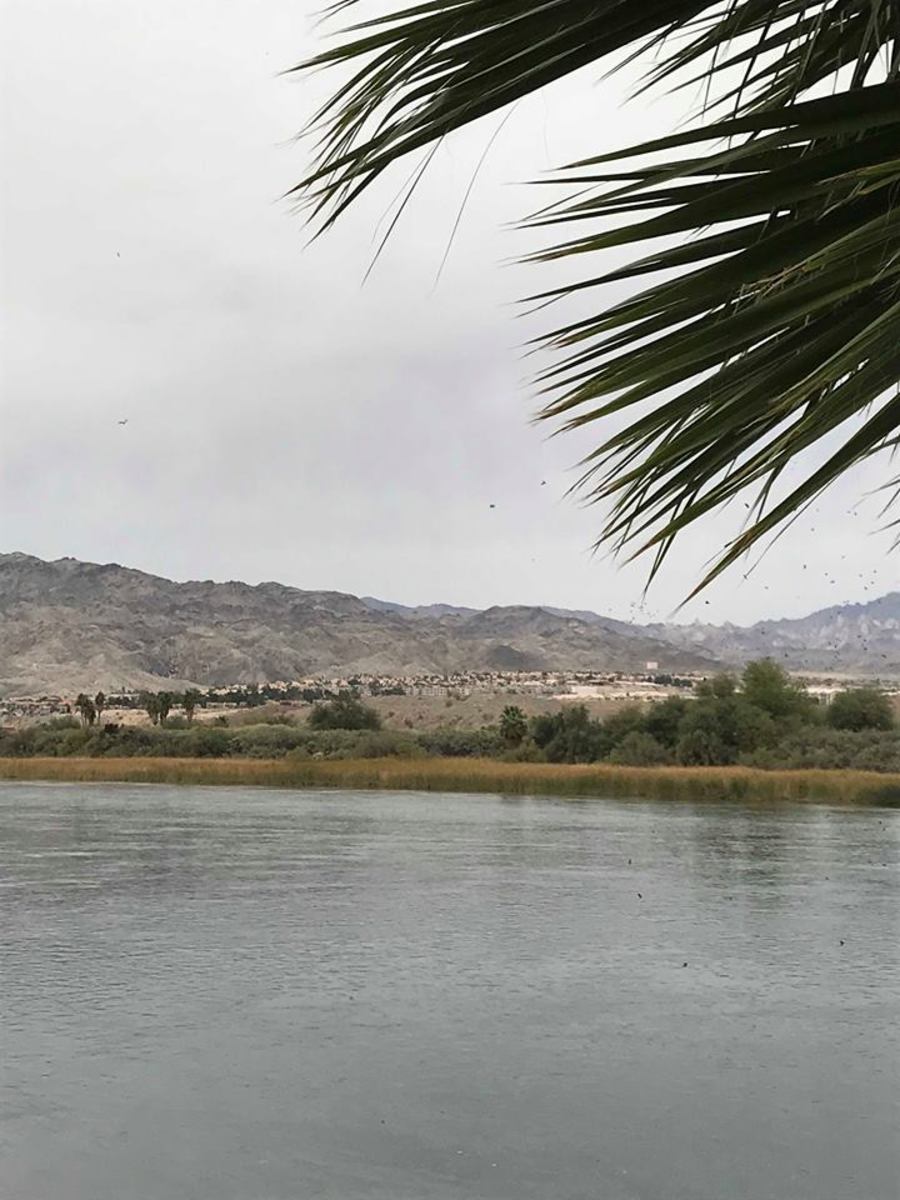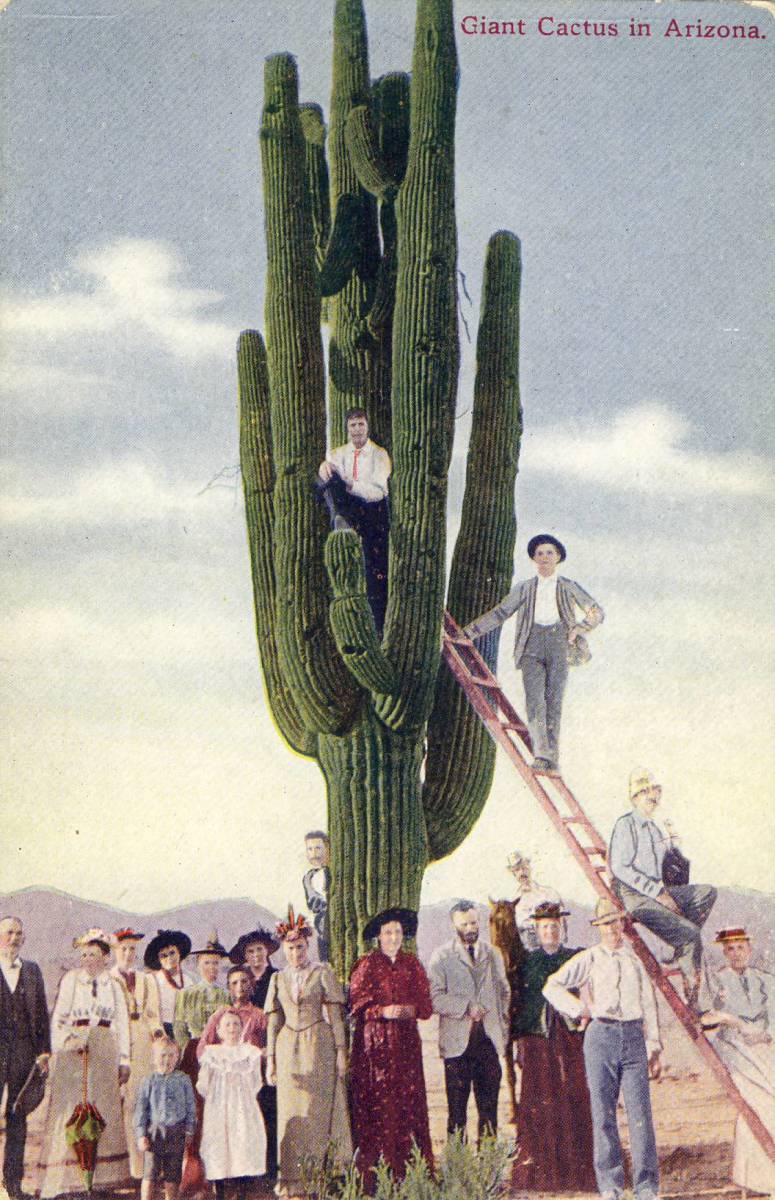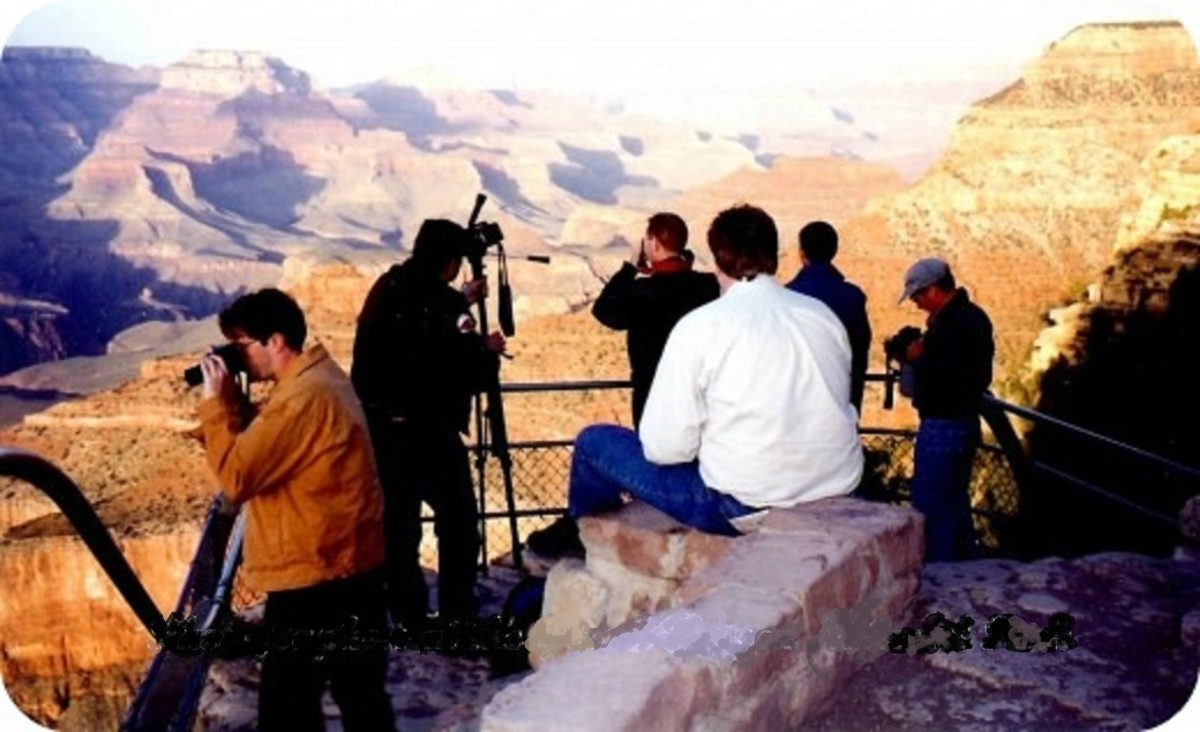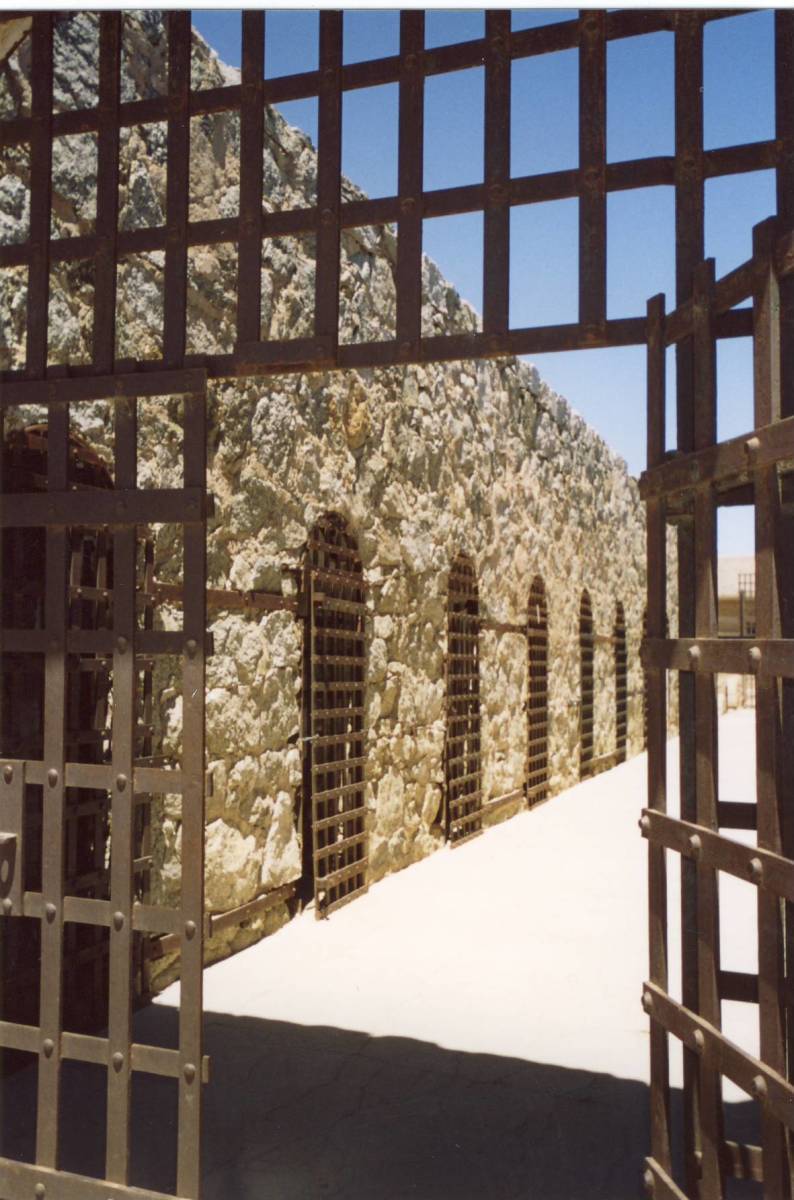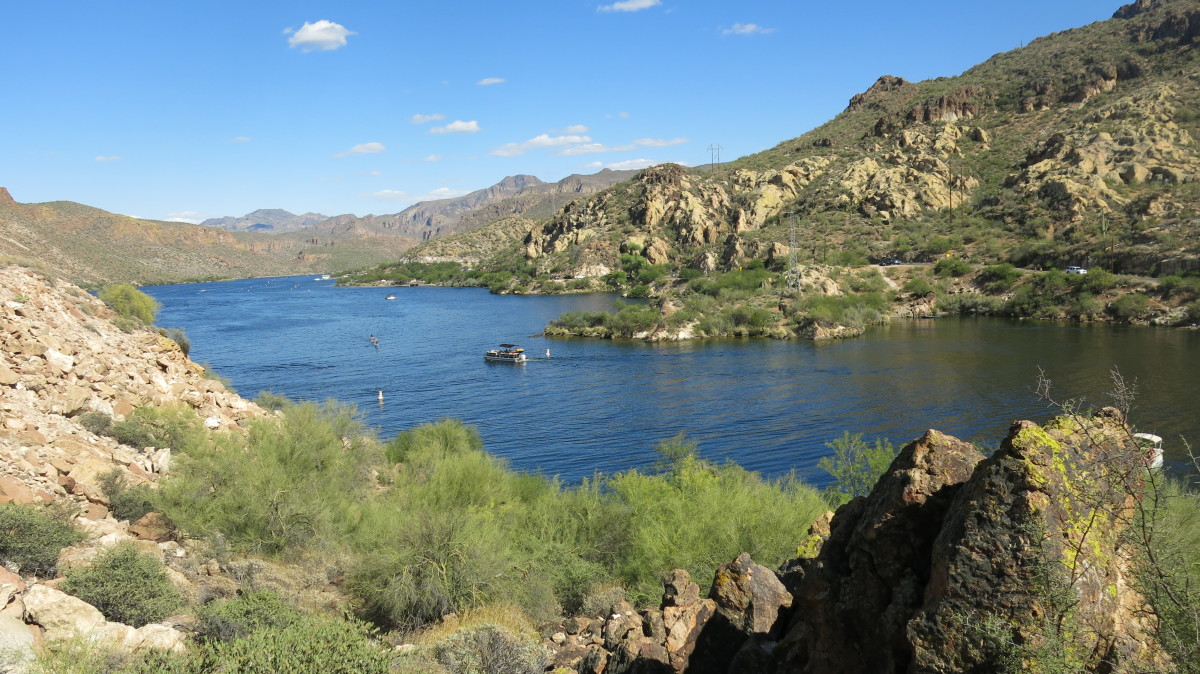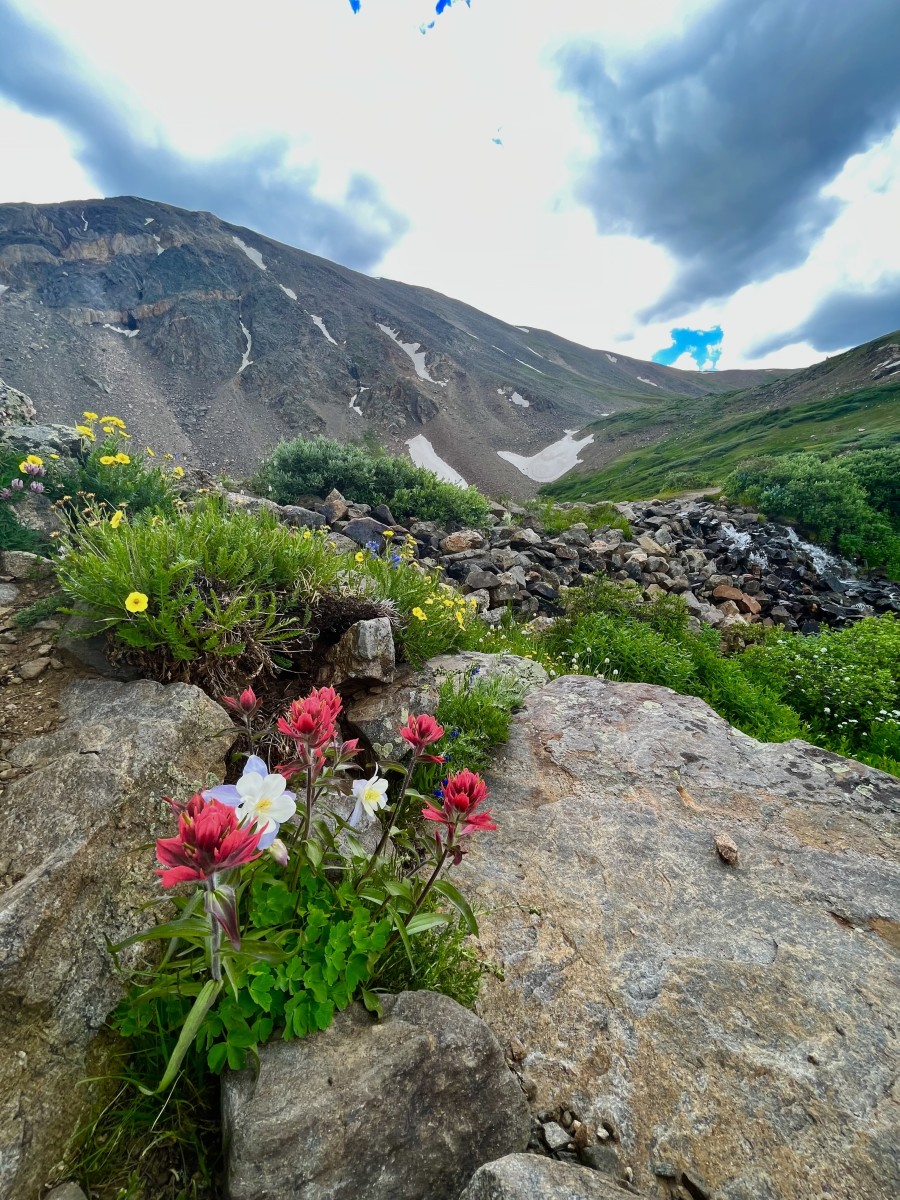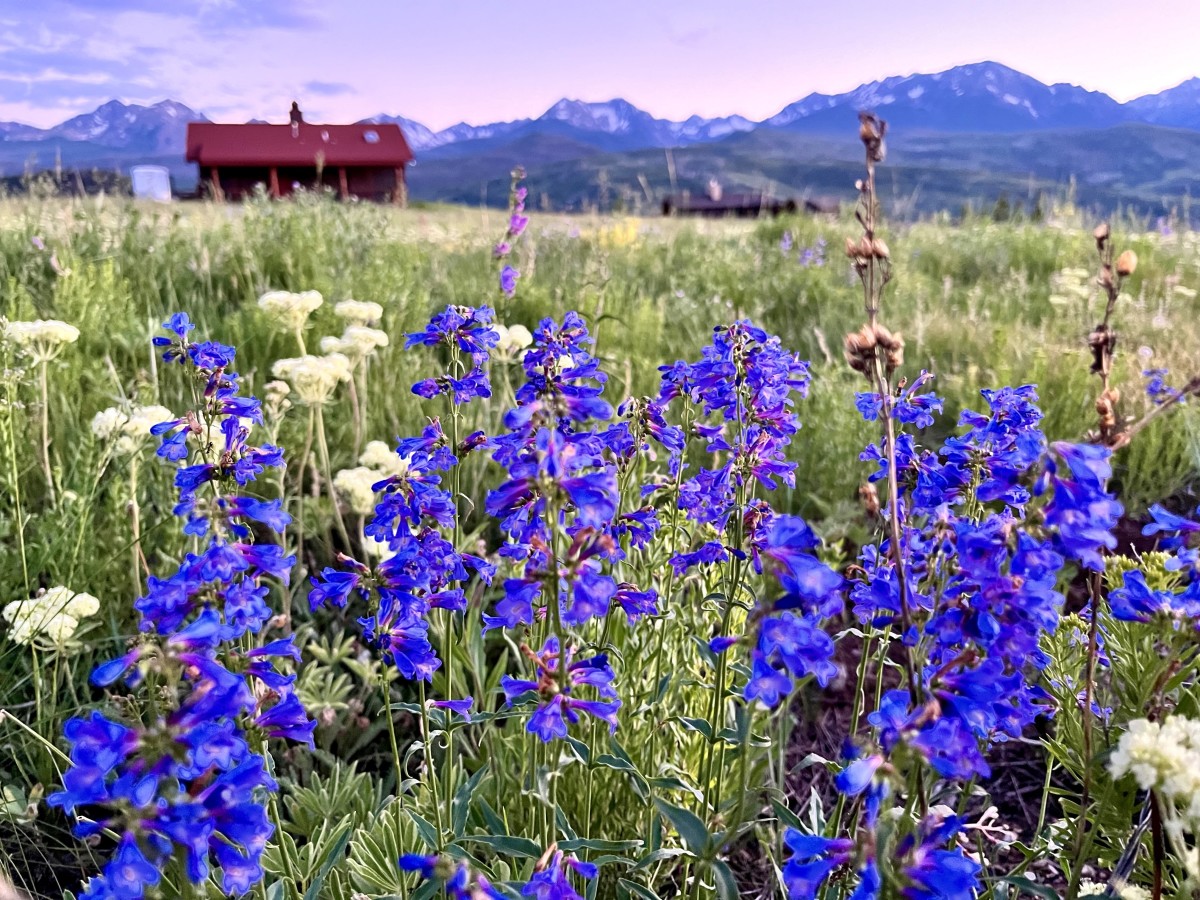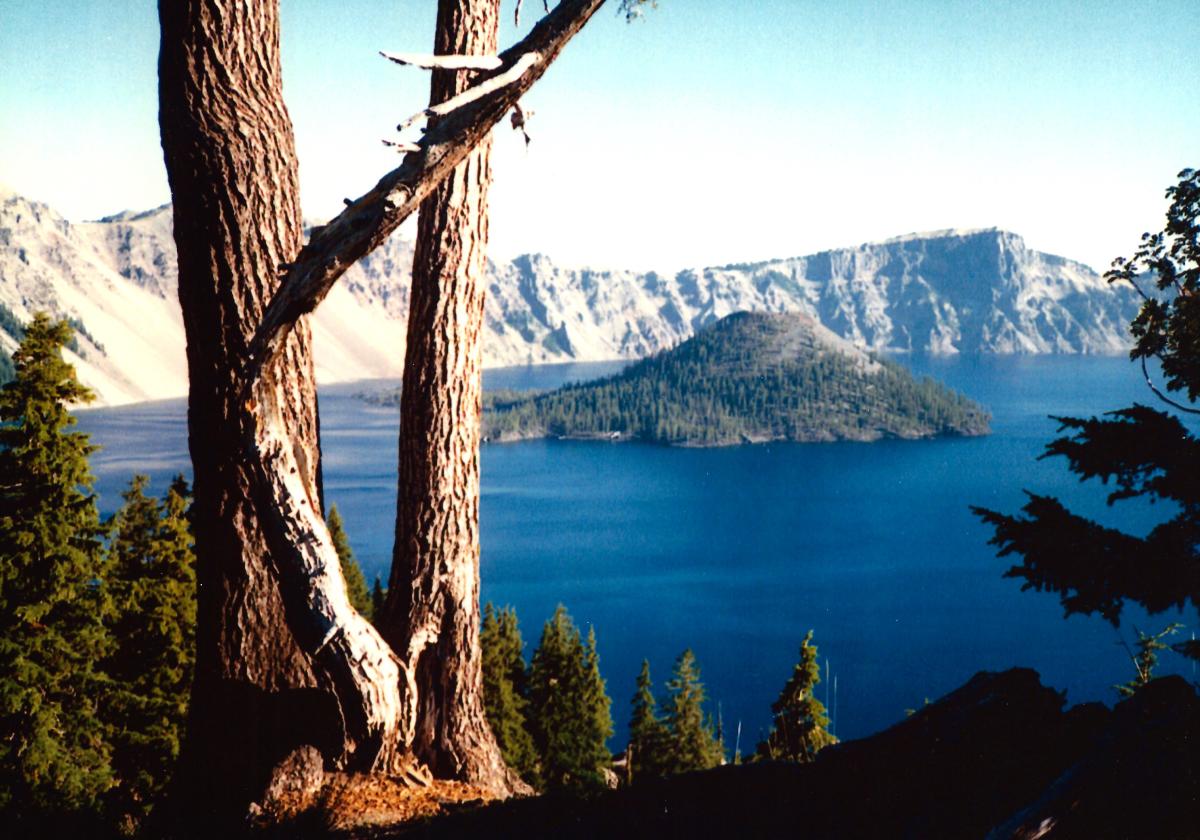Flowerscapes
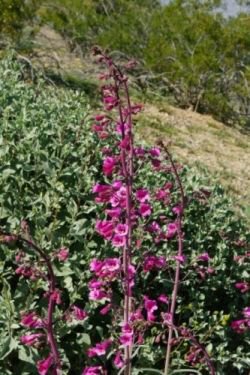
Scenic Views with Spring or Summer Flowers
During a year when there are abundant winter rains (or something vaguely resembling abundant), I travel in different parts of Arizona in search of scenery that has wildflowers in it, either a carpet of color, or specific flower stands that add color to the scene. This Lens consists of my sharing with you some of the scenes I have photographed, along with some information about the area and the flowers.
The flowers to the left are Parry's Penstemons (Penstemon parryi). A penstemon is a flower with five petals and stamens. Because the bottom petal is elongated and fuzzy, they are also called Beardtongues. These flowers rarely carpet a hillside, but provide a splash of color in a scene.
Here is a view along U.S. 60 west of Phoenix, showing Penstemon.
All photos are mine.
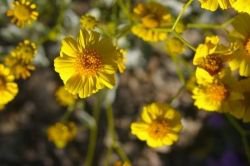
In my back yard
Brittlebush - Encelia farinosa
The first place I look for flowerscapes is in my neighborhood. We get carpets of Brittlebush flowers in the spring. Brittlebush have showy yellow flowers. The plant is called Brittlebush because the stems snap off cleanly.
That is a close up shot of a Brittlebush flower on the right.
These photos are in my yard.
This one is down the street.
And this one is on the other side of the mountain which is a mile from our house.
Brittlebushes are widespread
This photo was along the Sweetwater Trail in the Tucson Mountains. The plant in the foreground is Ocotillo, Fouquieria splendens.
Down the street again.
This is Picacho Peak. For you history buffs, this was the site of the westernmost battle of the Civil War.
These next two photos are from the Lost Dutchman State Park in the Superstition Mountains west of Phoenix.
This photograph is in the Castle Rock Wilderness, between Ajo and Kofa.
This photo is from the Kofa National Wildlife Refuge. This beautiful place is north of Ajo, Arizona. Notice, if you look closely, you can see that there are small yellow signs. This was along a gas line underground. This isn't the first time I found wildflowers over or under something manmade, but nowhere else.
The final photograph is in the Organ Pipe Cactus National Monument, in the Ajo Mountains, just north of Mexico.
From Castle Rock Wilderness:
From the road to Bartlett Lake, northeast of Phoenix. The red flowers are Chuparosa (Justicia californica). More on those later.
Chuparosa and Brittlebush
Justicia californica
Near Bartlett Lake.
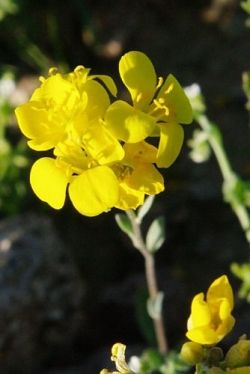
Bladderpods
Lesquerella fendleri
A closeup of this flower is on the right. This is a true bellyflower (see my lens on bellyflowers). You have to get down to the ground to really take a look at it. These come out early in the season, even though Brittlebush start blooming first at times, and not at other times, and last longer.
These are called "Bladderpod" because the seed pods look like little bladders.
These photos are in my neighborhood.
While I was there, I got a bonus: a Red-tailed Hawk!
This picture was taken near the Quinlan Mountains, where Kitt Peak is located. Kitt Peak is the home of the famous solar telescope.
This scene is in the Tucson Mountains, along Picture Rocks Road.
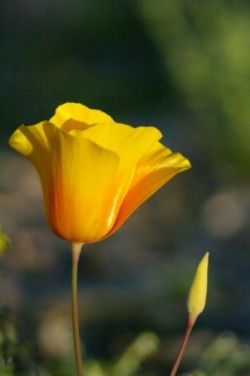
California Poppies
Eschscholzia californica
California Poppies form spectacular carpets in many locations in Arizona, in the spring. People will often travel long distances to see them. One of the most famous locations for these flowers is Picacho Peak.
This is a view from partway up Hunter's Trail, which goes to the top of Picacho Peak. You can see there really are carpets of poppies at the base of the mountain.
Another scene at the base of the mountain.
A final shot from Picacho Peak area.
You can see Coulter's Lupines (Lupinus sparsiflorus) mixed in with the poppies.
Another close look at California Poppies. This one was taken in Catalina State Park.
This shot was taken in the Lost Dutchman State Park. Unfortunately, the peak of the poppies was past.
People don't realize the desert can be this green!
This scene is by the Quinlan Mountains. If you look closely at the tallest peak, you can see the solar telescope.
These scenes are in the Ajo Mountains, in the Organ Pipe Cactus National Monument. The two species of tall cactus are Saguaros (Carnegiea gigantea) and Organ Pipes (Stenocereus thurberi)
This hillside was covered with California Poppies, Brittlebush, and photographers!
These two photos were taken at Lake Pleasant, west of Phoenix.
Notice that the entire hillside in the distance has large clumps of California Poppies.
Catalina State Park, east of northwest Tucson:
The cacti are Saguaros. The first shot is looking up the hill, and the second is from partway up the trail, looking down.
Another shot at Lake Pleasant.
The very famous display on Peridot Mesa is located within the Apache Reservation. The mesa is named after the light green semiprecious stones called peridot,s which are found in the area. The first scene is next to Peridot Mesa, but looking northeast.
The tall, spindly plant is Ocotillo, which I showed you earlier.
Two shots of Peridot Mesa.
This shot is along U.S. Route 60, east of Phoenix and just west of Gonzales Pass.
I also found Parry's Penstemon and other flowers along the highway.
The next scene is in the White Tank Mountains, west of Phoenix. The flowers in the foreground are Desert Mallow.
Desert Mallow
Sphaeralcea ambigua
Also known as Globe Mallow, Sore Eye Mallow, and Sore Eye Poppy, because the hairs will irritate the eyes. It is rare for this plant to form carpets, but it does often have showy displays. This first scene is in the Tucson Mountains.
The second scene is on the way to Lake Pleasant.
Desert Mallow comes in a variety of colors from white to deep rose. I will show you some of those later.
These two scenes were taken along the highway to the Vermilion Cliffs in northwestern Arizona. Because of the altitude, spring comes in the late summer there. The entire valley floor was carpeted with Desert Mallow.
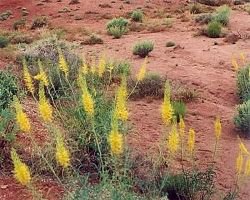
Prince's Plume
Stanleya pinnata
As long as we are in the vicinity of Page, I'll show you the Prince's Plume that was blooming near Lees Ferry, in Glen Canyon.
Sunflowers
Helianthus annuus
Sunflowers bloom in August, north of Flagstaff. The mountains are the San Francisco Peaks.
This photo was taken on the same day, but because of the angle, I was able to bring out a deeper blue sky.
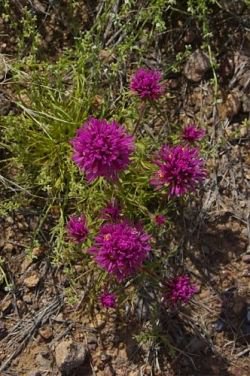
Owl Clover
Castilleja densiflora
I have had relatively bad luck locating carpets of Owl Clover, unfortunately. I know where to find small stands, but even though I watch carefully for reports, I still haven't managed to find any large carpets. These are probably my favorite wildflower because of their color. Look closely and you will see some yellow spots on some petals. It's a very interesting design. This small patch was seen along the road between the turnoff to Kitt Peak and Why, Arizona. There is usually Owl Clover near Kitt Peak as well.
My favorite Owl Clover picture, taken in the White Tank Mountains, west of Phoenix.
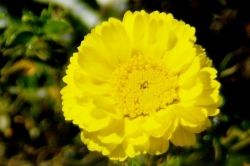
Desert Marigold with California Poppies
Baileya multiradiata
Along the road between the Kitt Peak turnoff and Why, Arizona.
Palo Verde Trees
Cercidium microphyllum
Down the street from my house, the Palo Verdes are blooming. They bloom in May and June. "Palo verde" means "green trunk", and they have chlorophyll in their trunks, so they can do photosynthesis. They are without leaves for awhile, so this is important.
And this is taken in my yard.
I think it is wonderful how the flowers bloom at different times of the year so that bees and animals will be fed for many months. By the time the flowers stop blooming, there is fruit available. In the winter there isn't much of either, but surprisingly, I have found about 75 species of wildflower in my yard, and I have seen something blooming every month of the year!
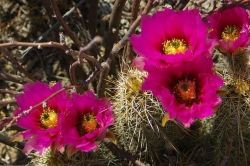
Hedgehog Cactus
Echinocereus fendleri
Cactus starts blooming around June, and blooms into July. This photo was taken in the Ajo Mountains.
Prickly Poppy
Argemone polyanthemos
This is late summer, again because of the altitude. The location is along the road to Madera Canyon, in the Santa Rita Mountains, in southern Arizona.
If you look closely, you can see there is still snow in the crevices of Mount Baldy!
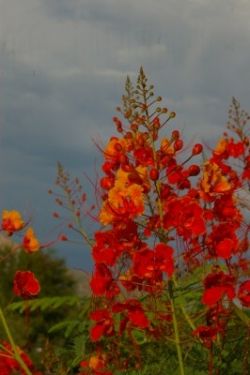
Mexican Bird-of-Paradise
Caesalpinia pulcherrima
This is the only flower I will include that is not a wildflower growing on its own in a natural setting. This is a widely cultivated plant, for decorative purposes. It blooms for many months with these striking orange-to-red flowers. Here, I incorporated it into an image with the Santa Catalina Mountains, north and east of Tucson. It is native to the Sonoran Desert, but does not grow in this area on its own as far as I know.
I'll be back with more photos soon. Please visit again.
For Further Reading
Sonoran Desert Plants on Amazon
The first two books are written by a personal friend, who is very knowledgeable about Sonoran Desert plants, and uses this knowledge professionally. The rest are just good books I know about.
Sonoran Desert Food Plants: Edible Uses for the Desert's Wild Bounty
by Charles W. Kane
Medicinal Plants of the American Southwest (Herbal Medicine of the American Southwest)
by Charles W. Kane
A Field Guide to the Plants of Arizona
by Anne Orth Epple
Gathering the Desert
by Gary Paul Nabhan
70 Common Cacti of the Southwest
by Pierre C. Fischer

